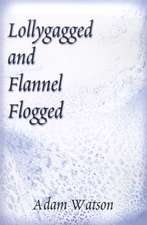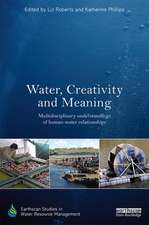Design for Flooding – Architecture, Landscape, and Urban Design for Resilience to Flooding and Climate Change
Autor D Watsonen Limba Engleză Hardback – 21 dec 2010
Preț: 523.98 lei
Preț vechi: 689.45 lei
-24% Nou
Puncte Express: 786
Preț estimativ în valută:
100.26€ • 104.68$ • 82.98£
100.26€ • 104.68$ • 82.98£
Carte disponibilă
Livrare economică 14-28 martie
Livrare express 28 februarie-06 martie pentru 50.34 lei
Preluare comenzi: 021 569.72.76
Specificații
ISBN-13: 9780470475645
ISBN-10: 0470475641
Pagini: 320
Ilustrații: Illustrations, maps
Dimensiuni: 224 x 285 x 25 mm
Greutate: 1.09 kg
Editura: Wiley
Locul publicării:Hoboken, United States
ISBN-10: 0470475641
Pagini: 320
Ilustrații: Illustrations, maps
Dimensiuni: 224 x 285 x 25 mm
Greutate: 1.09 kg
Editura: Wiley
Locul publicării:Hoboken, United States
Public țintă
primary: architects, engineers, landscape architects secondary: students in architecture programsNotă biografică
Donald Watson, FAIA, an architect and planner, is former chair of the Yale School of Architecture Environmental Design Program, and former professor and dean of the School of Architecture, Rensselaer Polytechnic Institute. He received the 2002 ACSA Distinguished Professor Award and the 2005 AARC Haecker Leadership Award for Architectural Research. His publications include Climatic Building Design, winner in the Architecture and Urban Planning category of the American Publishers Award for Professional and Scholarly Excellence. Michele Adams, P.E., a water resources engineer, is principal and founder of Meliora Environmental Design in Kimberton, Pennsylvania. Her work encompasses environmentally sensitive site design and sustainable water resources engineering.
Cuprins
Preface and Acknowledgments. Foreword (Carol Franklin, RLA, FASLA) Foreword (Daniel E. Williams, FAIA). Introduction. PART I: NATURE OF WATER. Chapter 1: Weather. 1.1 Sun and Earth. 1.2 The Atmosphere. 1.3 Weather. Chapter 2: Land and Water. 2.1 Water and Carbon Cycles. 2.2 Biodiversity and the Landscape. 2.3 Follow the Water: The Opportunity for Watershed Planning. Chapter 3: Flooding. 3.1 Flooding from Increased Precipitation. 3.2 Flooding from Severe Storms. 3.3 Economic and Social Costs of Water-Related Natural Disasters. PART II: DESIGN WITH WATER. Chapter 4: The Natural Landscape. 4.1 Understanding the Natural Water Balance. 4.2 When the Water Balance Is Altered. 4.3 Soils and Vegetation. 4.4 Subsurface Water Movement. 4.5 Stream Systems, Wetlands, Riparian Zones, and Floodplains. Chapter 5: The Altered Landscape. 5.1 When the Landscape Is Altered. 5.2 Altered Stream Systems and Increased Flood Damage. 5.3 Why Detention Does Not Solve Flooding. 5.4 Summary: The Natural Landscape as a Model for Resilient Design. Chapter 6: Design for Inland Flooding. 6.1 Resilient Design for Inland Flooding. 6.2 Tools for Watershed Protection. 6.3 Communities and Buildings in Floodplains. PART III: FLOOD-RESISTANT DESIGN. Chapter 7: Flood Design Analysis. 7.1 Definition of Terms. 7.2 Flood Elevation: Base Flood and Design Flood. Chapter 8: The Coast. 8.1 Coastal Processes. 8.2 Shoreline Protection. 8.3 Flood Barriers and Floodgates. 8.4 Summary of Coastal Protection Measures. Chapter 9: Flood Design Practices for Buildings. 9.1 Overview of Flood Design. 9.2 Flood Design at the Building Scale. PART IV: DESIGN FOR RESILIENCE. Chapter 10: Flood-Resistant Design for Sites and Communities. 10.1 Coastal Communities. 10.2 Comprehensive Planning for Resilient Communities. 10.3 Local Actions to Build Community Resilience. Chapter 11: Sea Level Rise. 11.1 Sea Level Rise: The Issues. 11.2 Sea Level Rise: Design Responses. Chapter 12: Design for Resilience. 12.1 The Wave of the Future. 12.2 Models for National and International Action. 12.3 Design Resolution. Epilogue. Glossary. Index.
Descriere
Architects, urban planners and urban designers, as well as water resources engineers and landscape architects will discover that Design for Flooding presents the best practices and lessons to create buildings and communities that are more resilient in the face of severe weather, climate change, and the prospect of rising sea level.











